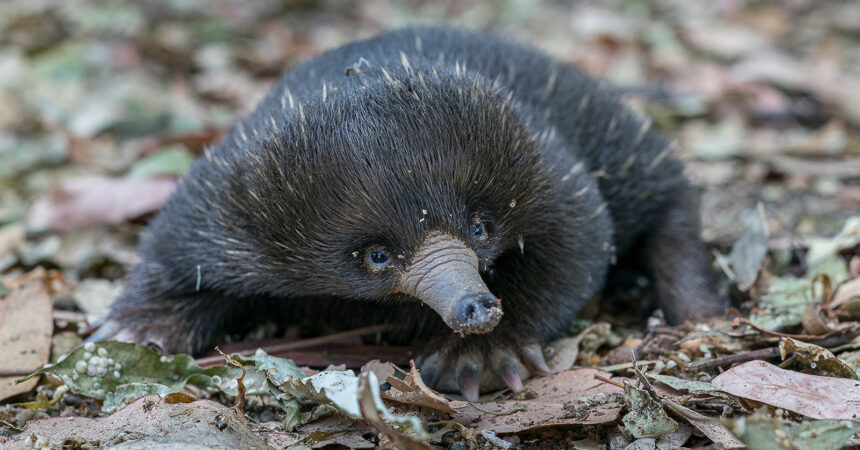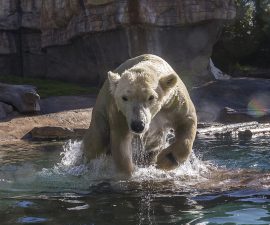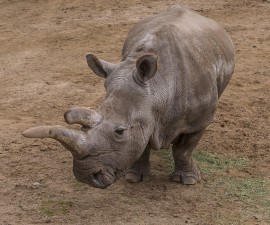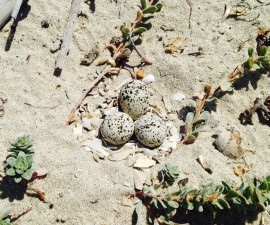Four-month-old Puggle Gaining Strength and Thriving
For the first time in San Diego Zoo Global’s history, an echidna (ih-KID-na) baby—or puggle, as they are called—has hatched at the San Diego Zoo Safari Park. The puggle was estimated to have hatched on Feb. 14, 2020. This unique, tiny, spiny Australian species has small eyes and a distinctive beak, or snout. The puggle is still developing its protective spines, and it is moving around on its wobbly little legs as it grows and gains strength—using its sharp claws to dig into the ground and keep its balance.
Echidnas are one of only two Australian mammals that lay eggs; the other is the platypus. Egg-laying mammals are called monotremes. Echidnas are notoriously difficult to breed in managed care, so wildlife care specialists are extremely pleased with the progress of the this puggle, whose sex has not yet been determined.
“We are thrilled and excited to welcome our first-ever echidna puggle at the San Diego Zoo Safari Park,” said Savanna Smith, wildlife care specialist, San Diego Zoo Safari Park. “It is an honor to care for this little one, as we learn more about this species’ reproduction through this puggle’s hatching. Mom and puggle are doing extremely well, and we will continue to monitor the puggle’s progress until it is ready to venture out on its own.”
The puggle’s mother, named Orange, and father, Shaw, also reside at the Safari Park. Echidnas are solitary animals, with adult males and females only coming together to breed once a year. Approximately four weeks after conception, the mother lays a single, soft egg about the size of a grape and places it in a pouch on her abdomen. After 7 to 10 days, a tiny, naked puggle—smaller than a jelly bean—hatches. The puggle uses its tiny, see-through claws to grip the special hairs within the mother’s pouch. The mother does not have nipples, the way other mammals do. Instead, the little puggle laps up milk that the mother’s body secretes from special glands in her pouch. Once the puggle starts to develop spiky spines at around 6 to 8 weeks, the mother deposits it in a specially constructed nursery burrow, returning to feed it every 3 to 6 days.
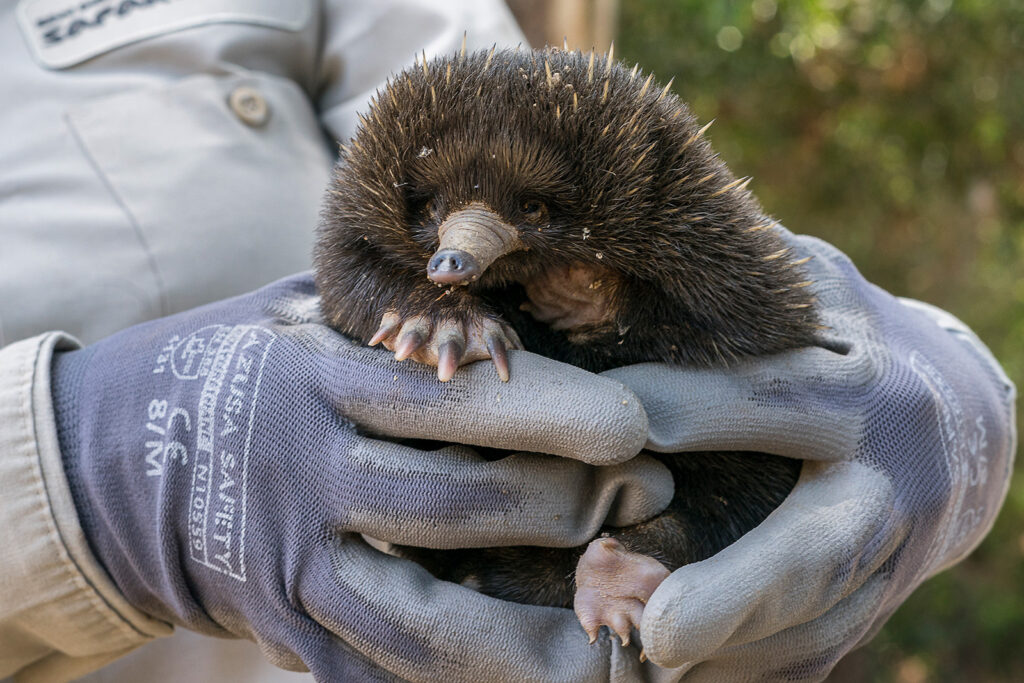
A day in the life of this puggle consists of sleeping the majority of the time, growing and developing in its warm, dark burrow. Animal care specialists check the puggle each day to monitor its body condition, hydration and weight, ensuring that it is getting proper nutrition from its mother. While it weighed less than an ounce at hatching, the growing puggle now weighs just over a pound and measures about 6 inches in length. Once the puggle gains strength and is weaned from its mother, at around 6 to 7 months, it will start venturing out on its own and will no longer have contact with its mother.
Echidnas live in Australia, Tasmania (an island state of Australia) and New Guinea, from the highlands to the deserts and forests. Adult echidnas vary in size by geographic location, but can measure 14 to 30 inches in length and weigh 5 to 22 pounds when fully grown.
The echidna may be active during the day, evening or both, depending on the season and food sources. They have no teeth, but are well adapted to eat termites, ants, beetle larvae and other soil invertebrates. Their large, strong claws are great for breaking open rotting logs, and their long snouts—made of keratin, the same material human fingernails are made of—allow them to root around in soil.
A great deal of mystery still surrounds this spiny species. Echidnas are quite elusive in their native habitats, so it’s hard to study their natural breeding behaviors. Short-beaked echidnas are a very common species, but the other three species of long-beaked echidna are listed as Critically Endangered on the International Union for Conservation of Nature (IUCN) Red List of Threatened Species. It is hoped that the short-beaked echidna puggle’s hatching at the Safari Park will help unravel some of the mysteries of echidna reproduction, and provide vital information to help save the long-beaked echidna from extinction.
The echidna puggle will remain out of the public view until further notice, but guests may see adult echidnas on occasion in the animal ambassador area at Walkabout Australia or on a Roos and Mates Behind-the-Scenes Safari, when they become available, at the San Diego Zoo Safari Park.
Bringing species back from the brink of extinction is the goal of San Diego Zoo Global. As a leader in conservation, the work of San Diego Zoo Global includes on-site wildlife conservation efforts (representing both plants and animals) at the San Diego Zoo, San Diego Zoo Safari Park, and San Diego Zoo Institute for Conservation Research, as well as international field programs on six continents. The work of these entities is made accessible to over 1 billion people annually, reaching 150 countries via social media, our websites and the San Diego Zoo Kids network, in children’s hospitals in 12 countries. The work of San Diego Zoo Global is made possible with support from our incredible donors committed to saving species from the brink of extinction.

